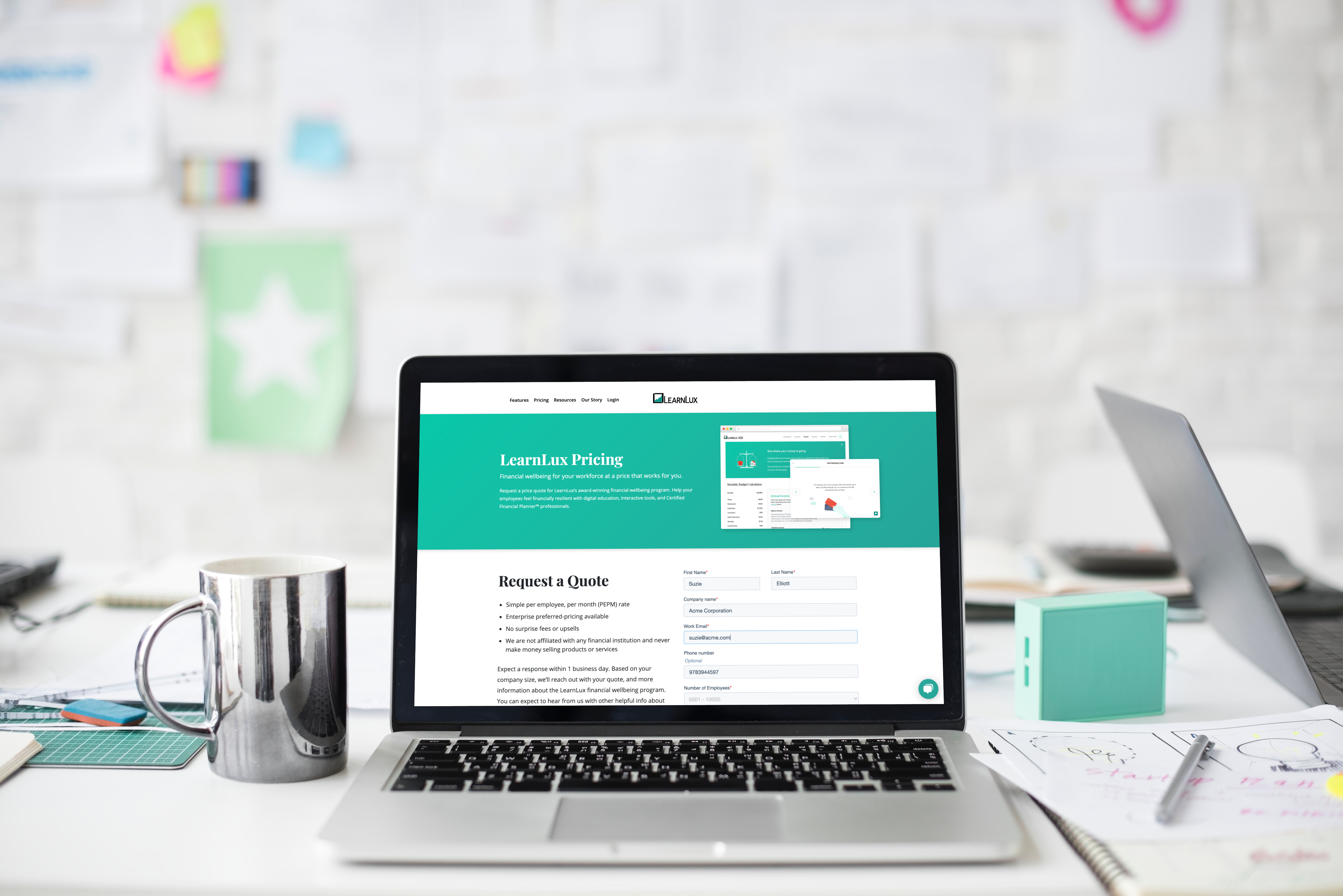Across the workplace financial wellbeing space, there are a few common program pricing models. As an HR or Benefits professional, important to understand how each program makes money, how that contributes to their pricing, and what fees or up-sells you may incur.
Here are the popular cost structures that you may see as you explore your options for bringing a new financial wellbeing program to your workplace.
Per Employee, Per Month (PEPM) Financial Wellbeing Program Pricing
One of the most common types of financial wellbeing program pricing is Per Employee Per Month (PEPM).
In the modern workplace, employers are on the hunt for financial wellbeing programs that are flexible, scalable, and accessible for all. This is why PEPM priced products lead the pack. PEPM pricing can be seat-based, utilization based, or flat rate.
For PEPM-priced programs, ask if there are any other ways that the financial wellbeing provider makes money besides this monthly rate. For example, LearnLux blends digital + human financial wellbeing into an independent, unbiased program so we do not sell products or take any affiliate commissions.
LearnLux makes money exclusively from the transparent PEPM price paid by the employer. We never make money from employees or hidden fees.
Flat-Fee Financial Wellbeing Program Pricing
Looking for a one-off financial wellbeing event for your employees? You will likely encounter one-time, flat-fee pricing.
Examples of one time events include lunch & learns, webinars, and flat-rate financial advising. One time programs can be free if offered through existing solutions such as your 401(k) provider, but be sure to confirm that the guidance is unbiased and in your employee’s best interest.
Programs that have flat-fee pricing often make money by upselling employees into one-on-one financial coaching or by pushing products (like 401k investments).
Advising Rate Pricing
Another common pricing and revenue model you’ll see in traditional financial wellbeing programs that are solely human-powered is hourly or set rate pricing.
This setup is common in situations where the financial wellbeing program is centered around one or more human financial advisors who charge a set rate to give guidance to employees. Depending on the advisor’s personal experience or level of certification, expect to pay anywhere from $150 per hour to up to $2,000 per employee to build a one-time custom financial plan. Be sure to ask if the advisor makes additional commission from recommending products or investments.
A Final Note on Financial Wellbeing Program Pricing
It's important to note that not all programs are transparent about their revenue models and pricing. Before partnering with a financial wellbeing program, here are a few key questions to ask:
- How does your company make money?
- Do you collect referrals or commissions?
- Do you have partnerships or arrangements with any financial services providers?
- Are you owned by or affiliated with a financial services company?
- How are your advisors compensated?
To stay in-budget but still get big value from offering a financial wellbeing program with Certified Financial Planner™️ professionals, look for holistic programs like LearnLux that blend digital and human elements and wrap both services into a simple PEPM model.

